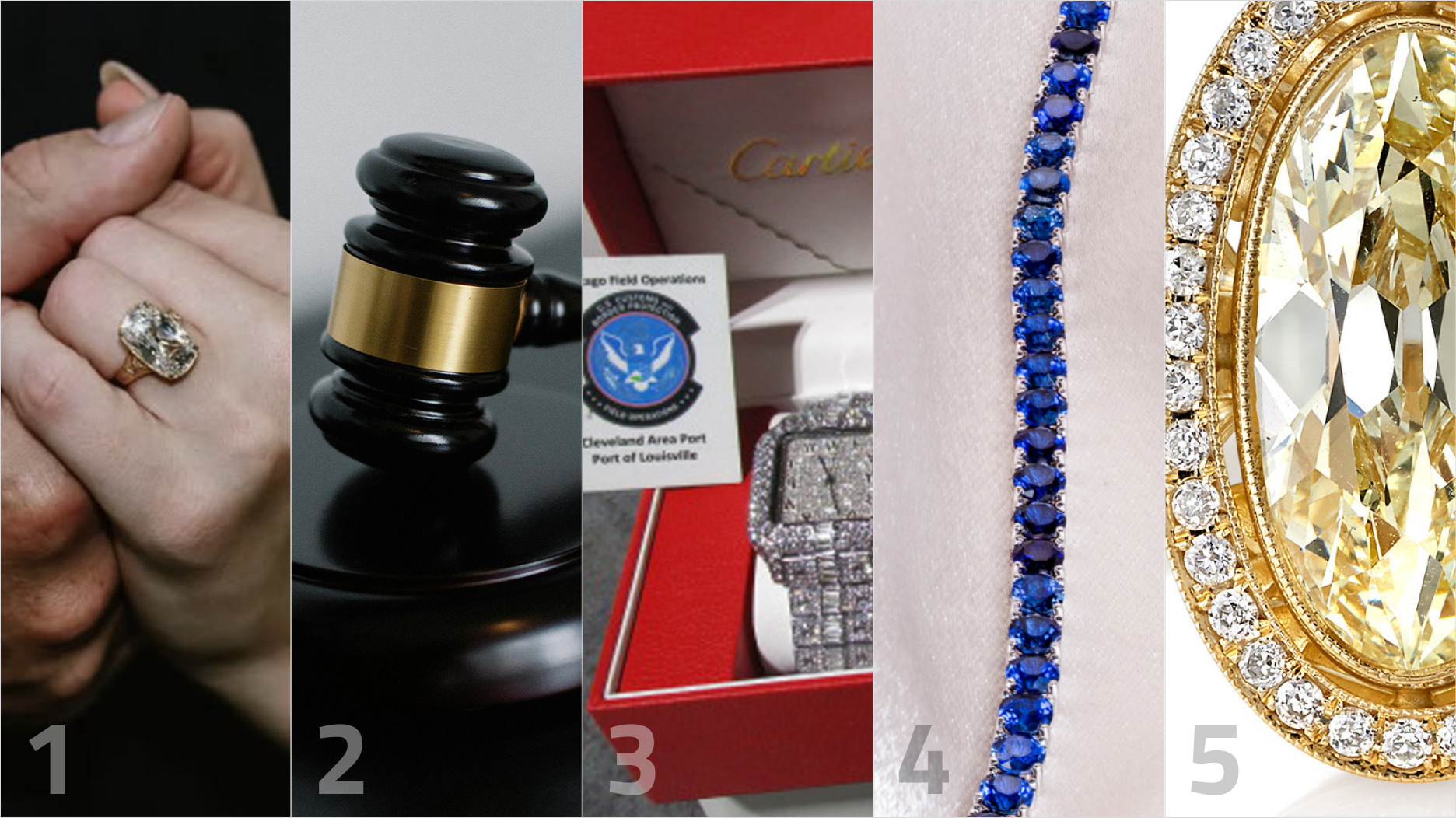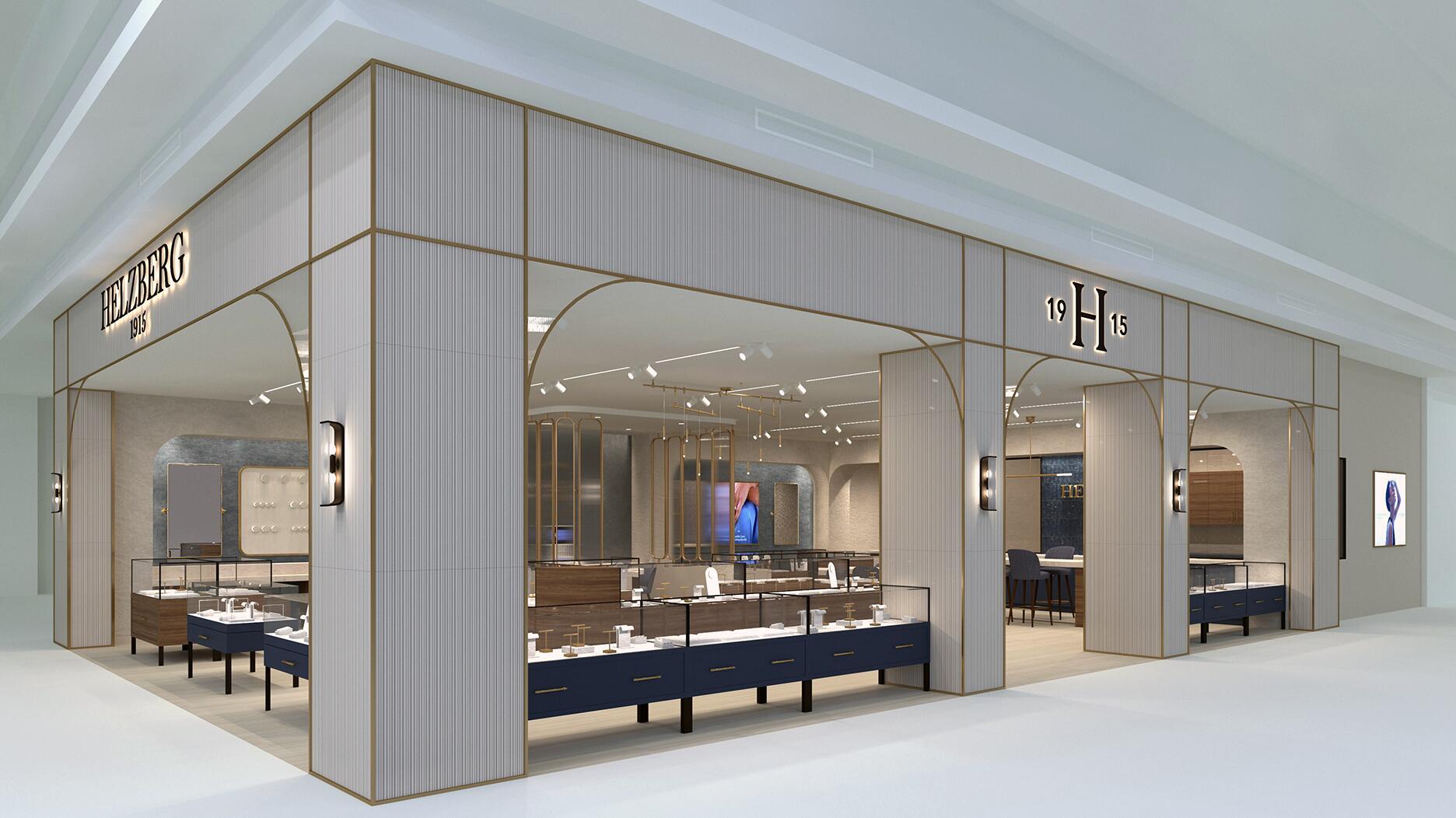Executive Chairman Richard Baker will take over the role as rumors swirl that a bankruptcy filing is imminent for the troubled retailer.
10 Things I Learned at the AGA’s Tucson Conference
They include updates on the state of the North American natural pearl market, Ethiopian emeralds and tourmaline production.

Tucson is not only full of amazing gems but also more knowledge and education than the gem crowd could ever ask for.
Sitting in on these sessions is one of my favorite parts of the trip, since my job requires me to always keep learning, and this year I was thrilled to add the Accredited Gemologists Association’s conference to my schedule.
I learned so much more than could be incorporated into a single blog, but here are just a few of the things I thought you’d all enjoy knowing too, ranging from gemological knowledge to market updates.
1. Locals have full control of the Halo-Shakiso emerald mine in Ethiopia.
The mining site, located about 37 miles from the town of Shakiso, is currently owned by the Bu’a Obsa Cooperative, a group of locals who initially banded together for gold and tantalum mining. It now has hundreds of shareholders from the local community that benefit from the emerald mining.
According to Jeffery Bergman of Primagem in Thailand, only the local tribespeople are allowed access to the mining site at Halo; they dig, extract, sort and grade the material.
2. There’s a variety of material that comes from Halo-Shakiso, including some “really exceptional” gem-quality rough.
According to Bergman, the bases of the emerald crystals are typically heavily included, so the excitement about the material surrounds the top part, where you can find some “really exceptional” gem-quality material.
Bergman also noted during his presentation that about 20 percent of production from the Halo mine doesn’t need any clarity enhancements.
3. Ethiopian emeralds share similarities with other emeralds with schist-based origins so they look like the material from Brazil and Zambia.
This means, Bergman said, that trace element analysis must be done to ascertain a stone’s origin, rather than relying on just inclusions; the GIA said in a 2017 Gems & Gemology article that it was able to separate the material from other sources by comparing trace alkali metals and some transition metals.
RELATED CONTENT: 5 Things to Know About … Ethiopian Emeralds4. The group in control of the Halo-Shakiso emeralds has been working to build it as a brand, mimicking the work of other areas that have done it successfully, such as Muzo.
As part of a project in which Bergman participated but is no longer associated, the Bu’a Obsa association created a logo, slogan, website, obtained photography, established a presence
It remains to be seen how the group will be able to establish their emeralds on the world market, especially given the Ethiopian government’s increasing control over the material.
5. The natural pearl market in the United States is actually a by-product of the button industry, Gina Latendresse of the American Pearl Company said.
By the late 1800s, the freshwater pearl button industry in the U.S. was flourishing, thanks to the number of mussels available in the country’s waters as well as the availability of cheap labor.
Decades later, this would give way to a new market created around cultured pearls in Japan, and, specifically, their need for the nuclei from North American natural pearls.
“All cultured pearls around the world, if they’re using a mother-of-pearl bead, they have a little bit of Tennessee or Mississippi River tributary mollusk inside of them,” she said.
6. As is the case with all pearls, North American natural pearls are rare.
According to Latendresse, only one in 10,000 mussel shells in the U.S. turns up a pearl. Of those, only 5 percent are symmetrical and only 1 percent are more or less round.
7. Natural pearls in North America come in a variety of beautiful, baroque shapes.
The wing shape is arguably the most recognizable, Latendresse said, and lends itself well to jewelry design; they have been used in creations by big brands, such as the Chrysanthemum brooch from Tiffany & Co.
There also are rosebuds, turtlebacks (baroque ovals), drop shapes, bodices, button shapes, snail formations and many others.
North American natural pearls also come in several colors, including white, pink, purple and lavender, as well as the greens and blues from abalone shells on the West Coast, and the pinks and oranges with a flame pattern that’s seen in the conch pearl.
RELATED CONTENT: 5 Things to Know About … Conch Pearls8. Tourmaline has a number of gemological characteristics that make it interesting to the trade.
For one, it can have a very pronounced pleochroism, said Claudio Milisenda, managing director of DSEF German Gem Lab in Idar-Oberstein. This is of great importance to cutters so it can be oriented a certain way.
It also has the capability to polarize light going through the stone, which is why slices of tourmaline cut parallel to the prism were used as a polariscope in ancient times, Milisenda said.
Additionally, tourmaline often shows distinct color zoning, which makes crosscuts of the crystals very popular with collectors.
9. The blue component in blue-green Namibian tourmaline can be removed through heating to make it greener.
Milisenda said darker stones also can be lightened through heat treatment.
This is important to note because both can be done by heating the stones at a temperature of about 650 degrees centigrade, so if it’s a relatively clean stone the inclusion pattern “hardly will change,” he said.
This means there’s no way to detect if this kind of tourmaline has been heat-treated or not, unless it is heated at a temperature above 700 degrees centigrade and checked using a refractometer.
Milisenda also said tourmaline’s color in general can be improved by irradiation. He noted that it’s common for pink tourmaline to be irradiated though it can’t be detected, presenting a dilemma to gemstone dealers.
“How can we disclose that when we are selling pink or red rubellite to a client?” he asked.
10. Here’s a quick production update on Paraiba tourmaline (meaning copper-bearing tourmaline in his case, as per the Laboratory Manual Harmonisation Committee).
Milisenda said supply in Brazil is very low—the Mulungu mine is working through the tailings, and there’s no production at Batalha currently.
He added that Nigeria never had continuous production, and Mozambique is producing an increasing amount of cabochon-quality material.
The Latest

Mohr had just retired in June after more than two decades as Couture’s retailer liaison.

Shekhar Shah of Real Gems Inc. will serve as president of the Indian Diamond & Colorstone Association in 2026.

How Jewelers of America’s 20 Under 40 are leading to ensure a brighter future for the jewelry industry.

This year’s good luck charm features the mythical horse Pegasus, and is our first Piece of the Week of the new year.


As part of the leadership transition, Sherry Smith will take on the role of vice president of coaching strategy and development.

It marks the third time the country has headed the Kimberley Process. Ghana will serve as vice chair.

Roseco’s 704-page catalog showcases new lab-grown diamonds, findings, tools & more—available in print or interactive digital editions.

The new Bulova x Stetson designs highlight two animals often associated with the American West—the bison and the Texas Longhorn.

Its residency at Yamron Jewelers will run through May 2026.

From influential executives to innovative designers, we pay tribute to the people we said goodbye to this year.

The retailer is expanding into areas with large Indian and South Asian populations.

The Italian brand has opened its first flagship amid the peaks of the Dolomites in Madonna di Campiglio, Italy.

The new curation at the Natural History Museum of Los Angeles County showcases rare gem and mineral specimens in their uncut, natural state.

The couple pleaded guilty to concealing at least $127 million in cash transactions at its precious metals businesses.

Consumers shared concerns about prices, inflation, tariffs, trade, and politics in the survey’s write-in response section.

In February 2026, the auction house will move its headquarters to the former Steinway Hall, a neoclassical landmark on Billionaires’ Row.

The new show will take place Jan. 23-25, 2026.

The former BHP Billiton leader and Gemfields chairman is remembered for his influential leadership throughout his 50-year mining career.

The LVMH-owned brand has partnered with the costume design union to revamp its award for 2026.

The luxury titan inked a deal to acquire an initial minority stake in the jewelry manufacturer with a pathway to full ownership by 2032.

The company’s curation of unsigned vintage and estate jewelry debuted at the Bloomingdale’s in Costa Mesa, California.

In the recent multi-shipment seizure, CBP also found counterfeit Audemars Piguet, Moncler, and Chrome Hearts items.

Jewelers of America execs and National Jeweler editors discuss tariffs, the sky-high gold price, and the engagement that broke the internet.

The luxury goods company said founder Ippolita Rostagno will remain at the brand’s helm.

Laura Burdese, who joined the Italian luxury brand in 2022, will take on the role in July.

The National Jeweler editors revisit the most noteworthy industry happenings and design trends from 2025.


























